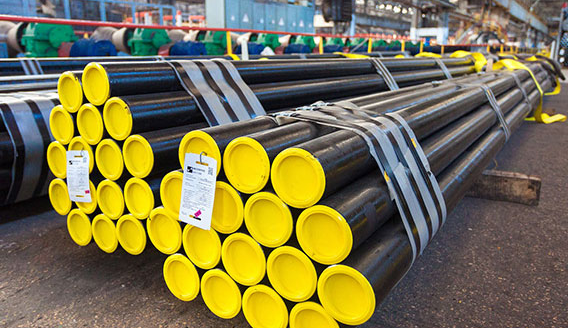
When you purchase a piping solution, what are the things you search for? Let us help you. You search for quality, durability, proper structure, usability, reliability, etc. How can manufacturers ensure all these properties? They can follow some compliance steps to ensure quality and precision in the seamless pipe manufacturing process.
However, beyond the technical aspects, engineers must handle a critical factor—compliance with regulations and standards. You may find a lot of discussions on how pipe fabricators ensure quality. However, very few talk about the regulatory compliances manufacturers must maintain.
So, today, we will focus on the essential compliances manufacturers must uphold to ensure quality, safety, and environmental responsibility.
Quality standards:
Quality is the cornerstone of compliance. It is essential in seamless pipe manufacturing. Manufacturers adhere to international quality standards as it is non-negotiable. Manufacturers must often comply with standards set by international organizations.
These are the American Society for Testing and Materials (ASTM), the American Petroleum Institute (API), and the International Organization for Standardization (ISO). These standards cover various aspects of pipe manufacturing. Seamless pipe manufacturers maintain material composition, dimensions, testing methods, and performance requirements.
Material specifications:
Pipe fabricators craft seamless pipes from various materials, each with unique properties. Compliance with material specifications is essential to ensure the pipes’ structural integrity, resistance to corrosion, and suitability for specific applications.
Material selection is the foundation of robustness. Manufacturers must carefully select materials that meet the specified requirements, including chemical composition, mechanical properties, and heat treatment processes.
Certifications and audits are extremely important to maintain quality. Third-party certifications and audits are vital for compliance. Independent organizations often audit manufacturers to ensure they meet the required standards. Achieving certifications like ISO 9001 or API Q1 demonstrates a commitment to quality and compliance. In fact, seamless pipe companies should source certified raw materials to avoid any defects.
Environmental regulations:
Environmental consciousness is a growing concern in modern manufacturing. These regulations help pipe fabricators reduce greenhouse gas emissions. Compliance with environmental regulations is crucial for minimizing the carbon footprint of seamless pipe production. It includes reducing energy consumption, managing waste responsibly, and implementing sustainable practices throughout seamless pipe production.
Safety and inspection measures:
Safety regulations are paramount to protect workers and manufacturing facilities. Compliance with occupational health and safety standards ensures a safe working environment. Manufacturers must provide proper safety equipment, training, and emergency response protocols to prevent accidents and injuries.
Seamless pipe manufacturers should also inspect their products and follow testing protocols. A rigorous examination and testing protocols are integral to compliance. Manufacturers must conduct various tests, including non-destructive testing (NDT) methods like ultrasonic testing (UT), magnetic particle testing (MT), and dye penetrant testing (PT). These tests help identify defects, ensure material integrity, and verify dimensional accuracy.
Welding standards:
As you already know, line pipe manufacturers do not have any welded joints. Their absence of welds makes them better than other pipes. However, pipe fabricators may need to involve welding in the production process of specific components. Manufacturers must comply with the standards. Compliance with welding standards is essential to ensure the quality and integrity of welded portions, such as fittings and joints. Seamless pipe companies must follow proper welding procedures, qualifications, and inspections for optimal compliance.
Traceability and documentation:
Maintaining meticulous records and traceability is an essential aspect of compliance. Manufacturers must document every step of the manufacturing process, from material sourcing to final product inspection. A paper trail of compliance is a must for maintaining proper documentation. Documentation helps demonstrate adherence to standards and supports product quality control.
Regulations and standards in the manufacturing industry are not static. They evolve over time to reflect technological advancements and changing environmental and safety concerns. Manufacturers must commit to continuous improvement. They should adapt to evolving standards and stay informed about updates to relevant standards.
Testing equipment calibration and export regulations:
The seamless pipe manufacturing process must have superior precision. The accuracy of testing equipment is critical. Regular calibration of testing instruments ensures reliable and consistent results. Compliance includes maintaining calibration records and performing necessary adjustments.
Manufacturers who deal in international trade must comply with export regulations. Their adherence is imperative for crossing borders legally. Often, exporting seamless pipes involves adherence to trade agreements, export control regulations, and customs requirements. Staying up-to-date with these rules and regulations is essential to avoid legal complications.
Conclusion:
Compliance in seamless pipe production is more than a bureaucratic obligation. It is a commitment to quality, safety, and environmental responsibility. Compliance is the fabric of responsibility for the pipe producers.
Manufacturers who uphold these compliances ensure the integrity of their products, protect their workers and facilities, and contribute to a sustainable future. The seamless pipe manufacturing process is not merely a process. It involves various responsibilities, including compliance with export regulations, welding standards, etc.